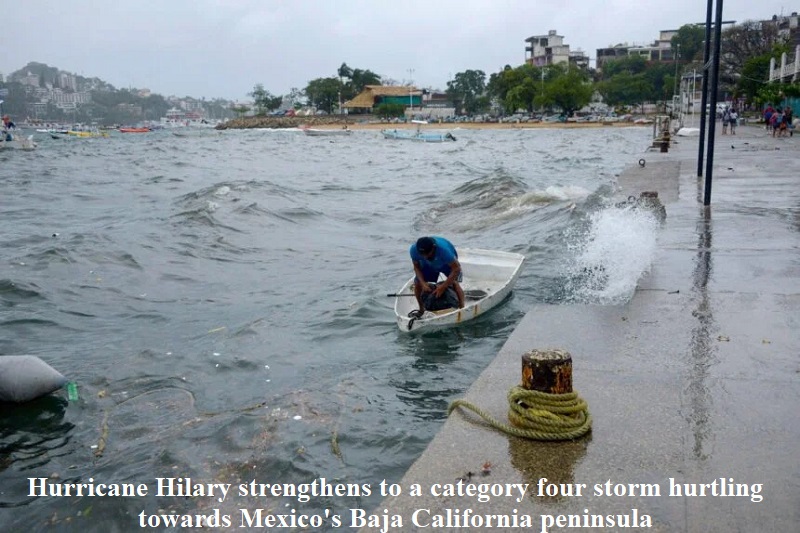
The United States’s National Hurricane Center (NHC) has announced that Hurricane Hilary, classified as a category four storm, is rapidly approaching Mexico’s Baja California peninsula on Friday. This event marks the NHC’s issuance of its inaugural tropical storm watch for California.
The US government agency also issued a warning about the potential for life-threatening and potentially catastrophic floods.
In its latest advisory, the Miami-based agency stated, “Life-threatening and potentially catastrophic flooding are likely over much of Baja California and Southern California this weekend and early next week.”
According to a Reuters report, the NHC anticipates that the powerful storm will approach Mexico’s well-visited resort city of Cabo San Lucas by late Friday. The NHC noted that the hurricane is expected to weaken before making landfall on the US West Coast this weekend. Nevertheless, it is anticipated to bring hazardous levels of rainfall.
NHC Deputy Director Jamie Rhome cautioned, “If you’ve got weekend plans, it’s probably time to start altering those plans.” Rhome highlighted that the region from San Diego to Los Angeles and Las Vegas is at risk of flooding, with the Palm Springs area facing particularly high danger as the storm arrives over the weekend.
As per the NHC advisory, Hurricane Hilary is currently moving in a west-northwest direction at a speed of nearly 12 mph or 19 kilometers per hour. The storm boasts maximum sustained winds of nearly 130 mph or 215 kilometers per hour. It was reclassified as a category 4 storm overnight.
Rhome explained that while the cold waters along the California coastline typically weaken hurricanes and tropical storms, “this system is expected to hold on to its strength because it will be moving fast.”
He also cautioned that California and Southern Nevada could experience severe flooding due to up to 10 inches or 25.4 centimeters of rainfall. The NHC, as reported by Reuters, warned that a storm surge could lead to coastal flooding and destructive waves along Mexico’s Baja California peninsula.
Following a record-breaking summer heatwave, Hurricane Hilary’s heavy rainfall is expected to affect California, Nevada, and neighboring Arizona. In July, both Phoenix, Arizona, and California endured an extended period of temperatures surpassing 110 degrees Fahrenheit or 43 degrees Celsius. This was attributed to a “heat Dome” of stagnant air over the region, according to the National Weather Service. In mid-July, California’s Death Valley desert witnessed temperatures exceeding 128 Fahrenheit or 53 degrees Celsius, ranking among the highest temperatures recorded on Earth in the last 90 years.

Post Your Comments